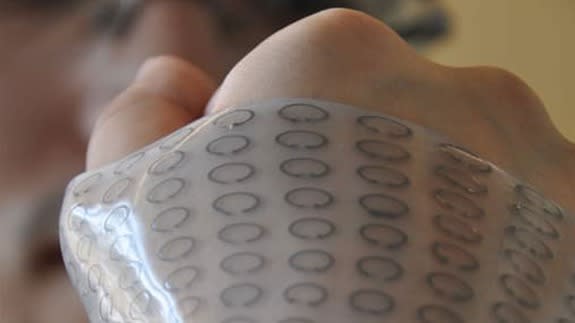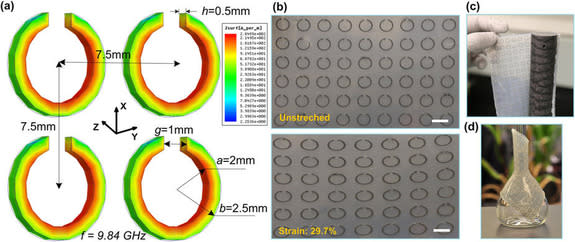There's a flexible material that can make you invisible to radar

When most people think of invisibility cloaks, they think of something from Harry Potter, donning a fabric that makes you blend right into the background. That might help you sneak into the restricted section of your school library, but that won’t fool radars
A team of engineers at Iowa State University published a research paper detailing the use of flexible metamaterials — man-made materials that have properties not found in nature — to cloak objects from microwave radar detection.
See also: Paging Harry Potter: Scientists create first super-thin invisibility cloak
The team dubbed the radar-absorbing metamaterial "meta-skin," which consists of a matrix of liquid metal split-ring resonators embedded in layers of silicone rubber. The liquid metal alloy is a mix of gallium and indium called galinstan, which stays liquid at room temperature but is not toxic like mercury. These split-ring resonators work by absorbing radar waves within specific frequency ranges.

Image: Iowa State University
By making the resonators liquid and embedding them in a flexible material, the team has essentially created anti-radar sheets that can be placed on any object. While they do not absorb all radar waves, research tests showed that about 75% of radar waves from 8-10 GHz was absorbed by meta-skin wrapped over the surface of a rod.
Common radar suppressors only cut down on backscattering, which is when radar waves hit an object and bounce right back at the emitter. The "meta-skin" is a step up from that, cutting down on waves scattering at different angles.
The flexibility of the resonators also allow them to be easily tuned to absorb different frequencies. Through stretching and spacing, the team was able to tune the resonance frequency up to 9.15-12.38 GHz. They don't want to stop there, though.
"The long-term goal is to shrink the size of these devices," Liang Dong told Everything RF, who worked on the research. "Then hopefully we can do this with higher-frequency electromagnetic waves such as visible or infrared light."

